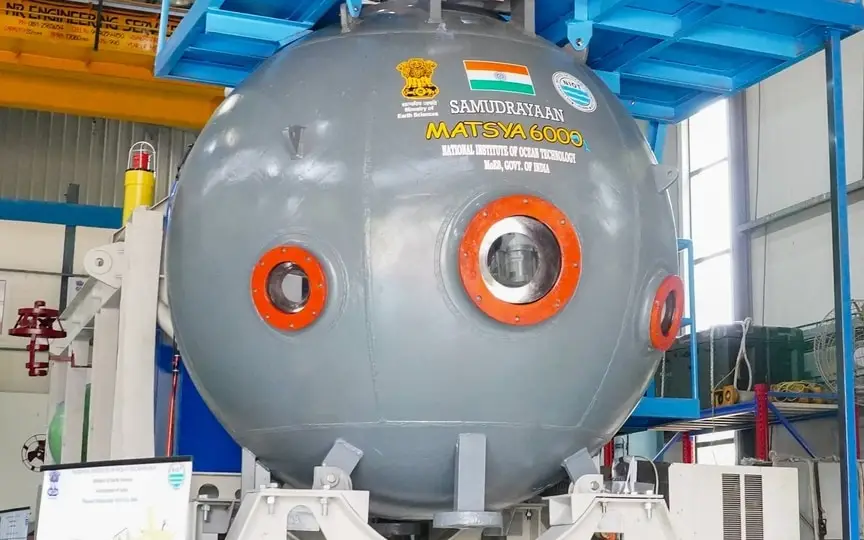Introducing Samudrayaan’s Matsya 6000: The Successor to Chandrayaan-3, Vikram, and Pragyan
India, having achieved success with the Chandrayaan-3 mission, is now embarking on a new venture to explore the depths of the Earth’s oceans. This upcoming mission, called “Samudrayaan,” is currently in the development phase and aims to be the country’s first deep ocean exploration endeavor. By delving into the ocean, India hopes to further support its “Blue Economy” initiative and expand its exploration of the universe beyond the Moon.
About Samudrayan mission
Earth Sciences Minister Kiren Rijiju shared a message on X saying, “Next is ‘Samudrayaan’ This is the ‘MATSYA 6000’ submersible under construction at the National Institute of Ocean Technology, Chennai. India’s first manned Deep Ocean Mission ‘Samudrayaan’ plans to send three people to a depth of 6 km in the ocean in a submarine to explore deep sea natural resources and biodiversity assessment.
The Samudrayan mission uses the MATSYA 6000 submarine along with three crew members to explore the ocean. The submarine is being developed by the National Institute of Ocean Technology (NIOT) in Chennai. It is called a highly advanced ocean vehicle that supports mission objectives. The marine vehicle’s number “6000” means that it can go as deep as 6000 meters below the surface of the ocean.
The submersible consists of instruments such as ACS (Autonomous Coring System), Autonomous Underwater Vehicle (AUV) and Deep Sea Mining System (DSM) that facilitate deep sea exploration. Throughout this mission, scientists will look for substances such as nickel, cobalt, and manganese.
According to reports. it is estimated that the Deep Ocean Mission will cost Rs. 4,077 crore, covering 2021-2026. Currently the budget is Rs. 1400 crore of which Rs. 405.92 crore has already been spent and Rs. 225.35 million has already been incurred.
Earlier in December 2022, under the Deep Ocean Mission, a Deepwater Autonomous Underwater Vehicle (AUV) named Ocean Mineral Explorer (OMe 6000) was sent underwater to a depth of about 5,271 meters to search for minerals at the Polymetallic Manganese Nodule (PMN) site in the center. Indian Ocean Basin (CIOB). The research results will strengthen the future Samudrayan mission to achieve its goals.




